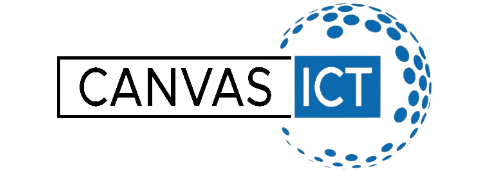Essential Eight

The Essential 8 – A Roadmap to Cyber Resilience in 2023
While there’s no magic shield that makes you completely invincible to all online dangers, experts strongly recommend a powerful set of eight cyber-safety actions. Known as the Essential Eight, this toolkit from the ACSC makes it much more challenging for the bad guys to hack into your systems.
Think of it like the digital world’s version of “an apple a day keeps the doctor away.” By adopting these, you’re setting up a strong line of defense, making it much trickier for the bad guys to break in.
The Dummy’s Guide to Essential Eight
Essential 8 – Introduction
In today’s digital age, organizations face an ever-increasing threat of cyber attacks. To address this issue, the Australian Cyber Security Centre (ACSC) has introduced a set of prioritized mitigation strategies known as the Essential Eight. Although originally designed for Microsoft Windows-based, internet-connected networks, the Essential Eight can offer insights that are beneficial across various platforms and environments.
What is the Essential Eight?
The Essential Eight is a collection of prioritized cyber security strategies aimed at protecting organizations from multiple threats. The framework was created by the ACSC and focuses primarily on Microsoft Windows-based systems.
The Eight Mitigation Strategies
1. Application Control
**What is it?**
Application control restricts the applications that can be executed on a system to a pre-approved list.
**Why is it Important?**
By controlling which applications are allowed to run, you can prevent unauthorized or malicious software from executing on your systems.
**How to Implement:**
Use solutions like Windows AppLocker or third-party software to establish and enforce application whitelists.
2. Patch Applications
**What is it?**
This involves regularly updating all software applications.
**Why is it Important?**
Outdated software can have vulnerabilities that are exploited by cyber criminals. Patching applications closes these security gaps.
**How to Implement:**
Automate the update process where possible and maintain a log for compliance and auditing purposes.
3. Configure Microsoft Office Macro Settings
**What is it?**
This strategy involves setting permissions for macros in Microsoft Office applications.
**Why is it Important?**
Macros can be exploited to deliver malware. Limiting macro usage to trusted applications helps mitigate this risk.
**How to Implement:**
Use Group Policy settings to disable macros from running in Office applications unless they are from trusted sources.
4. User Application Hardening
**What is it?**
This involves configuring applications to operate using the most secure settings available.
**Why is it Important?**
Many applications, like web browsers and PDF readers, have features that can be exploited to run malicious code.
**How to Implement:**
Disable unnecessary features and services in applications. Use security templates or configuration guides to secure settings.
5. Restrict Administrative Privileges
**What is it?**
This involves limiting administrative access to your systems.
**Why is it Important?**
Reducing the number of users with administrative privileges minimizes the risk of unauthorized changes or data exposure.
**How to Implement:**
Regularly audit accounts with administrative access and restrict permissions to only essential personnel.
6. Patch Operating Systems
**What is it?**
Like patching applications, this involves keeping your operating systems up to date.
**Why is it Important?**
Operating systems are the backbone of your IT environment, and vulnerabilities here can be catastrophic.
**How to Implement:**
Use automated update services and maintain a schedule for updating and rebooting systems.
7. Multi-Factor Authentication
**What is it?**
Multi-factor authentication requires two or more forms of verification before granting access.
**Why is it Important?**
This adds an additional layer of security, making it harder for unauthorized users to gain access.
**How to Implement:**
Implement two-factor or multi-factor authentication solutions for all sensitive systems and data.
8. Regular Backups
**What is it?**
This involves periodically backing up all important data.
**Why is it Important?**
In the event of data loss due to cyber attacks like ransomware, you can restore your systems to their previous state.
**How to Implement:**
Automate backups, keep multiple copies in different locations, and regularly test the backup process to ensure data can be restored efficiently.
—
Implementing the Essential Eight
Certainly! Explaining complex topics in a way that’s accessible to both technical and non-technical audiences can be a rewarding challenge. Here’s a more elaborate, and hopefully engaging, explanation:
Setting Up Your Digital Fortress with the Essential Eight
You wouldn’t build a house without a solid foundation, would you? Think of the Essential Eight Maturity Model as the blueprint for your organization’s digital fortress. It’s not just about slapping on a padlock and calling it a day; it’s about understanding the nitty-gritty of your current security status and setting up multiple lines of defense.
What’s the Essential Eight Maturity Model?
Picture the Essential Eight Maturity Model as your Cyber Security Fitness Trainer. Just as you wouldn’t go from couch potato to marathon runner overnight, this model doesn’t expect you to become a cyber-security ninja instantly. It’s designed to take you through a series of ‘fitness levels,’ each more secure than the last, tailored to suit your organization’s unique needs and vulnerabilities.
Why It’s Important to Know Where You Stand
Before you start adding layers to your digital fortress, you need to understand what you’re working with. Maybe your organization is the equivalent of a two-bedroom apartment—compact but vulnerable. Or perhaps you’re more like a sprawling mansion with multiple points of entry. Wherever you stand, the Essential Eight Maturity Model helps you take stock, so you can identify which windows need reinforced locks and which doors require additional bolts.
The Journey to a More Secure Future
Like any fitness plan, you start by assessing your current condition. The Essential Eight Maturity Model helps you perform a ‘health check’ on your current cyber security measures, highlighting areas that may need more focus. Whether it’s setting up more stringent identity verification processes or making sure your digital valuables are securely backed up, the model outlines a series of actionable steps. The ultimate goal? Reaching a state where your defenses are so robust that cyber invaders think twice before even attempting to compromise your systems.
What Are These Levels of Maturity?
Much like martial arts belts, the Maturity Model consists of multiple levels—each one signifying a greater degree of protection. You start at white belt, perhaps only implementing a couple of the Essential Eight strategies, and work your way up to black belt, where you’ve mastered all eight and possibly incorporated additional advanced measures.
So, you’re not just implementing a one-size-fits-all checklist; you’re embarking on a customized journey that makes your organization more resilient to cyber threats over time.
Assessing Your Implementation
The ACSC provides an Essential Eight Assessment Process Guide to help you gauge the effectiveness of your implementation. This guide offers a structured approach for assessment, allowing you to identify any gaps or areas for improvement.
Why Should You Consider the Essential Eight?
- Cost-Effective: Implementing these strategies can be far less expensive than dealing with a cyber attack aftermath.
- Comprehensive Protection: The Essential Eight offers multi-layered security, protecting against a wide range of threats.
- Regulatory Compliance: Following a recognized framework can help you meet various regulatory requirements related to cyber security.
Conclusion
While the Essential Eight was designed with Microsoft Windows-based systems in mind, the fundamental principles can be adapted for other platforms. Organizations looking to improve their cyber security posture would do well to consider implementing these eight essential steps as part of a broader cyber security strategy.
Absolutely, adding a call-to-action (CTA) at the end of your article can be a highly effective way to engage your readers and convert them into potential clients. Here’s how you could smoothly transition into the sales pitch:
Need Help Implementing the Essential Eight? We’ve Got You Covered!
If all of this information feels overwhelming, you’re not alone. Cyber security is a complex field, and while the Essential Eight offers a robust starting point, effective implementation often requires specialized knowledge and experience.
That’s where CanvasICT comes in.
Why Choose CanvasICT?
1. **Expertise:** With years of experience in the IT industry, we’re more than equipped to help you navigate the complexities of cyber security.
2. **Custom Solutions:** Every business is unique, and we offer tailored services to meet your specific needs and objectives.
3. **Comprehensive Support:** From the initial assessment to the full implementation of the Essential Eight, we’ll be by your side, offering continuous support and guidance.
Free Consultation
For a limited time, we are offering a **FREE consultation** to discuss how the Essential Eight can be effectively implemented in your organization. During this session, our team of experts will:
– Evaluate your current cyber security posture
– Discuss your specific needs and objectives
– Provide actionable insights and recommendations
Take the First Step Towards Enhanced Cyber Security Today!
Don’t leave your organization vulnerable to cyber threats. Contact us now to schedule your free consultation and take the first step towards a safer, more secure future.
We look forward to partnering with you to fortify your cyber security measures.
Let’s talk about your Cybersecurity Needs
We would love to hear from you, Simply fill out this form and out team will contact you to discuss your requirements.
Mon-Fri 09:00 AM – 06:00 PM
Sat and Sun OFF
Office Address
Gungahlin – Canberra – ACT
Tarneit – Melbourne – VIC
